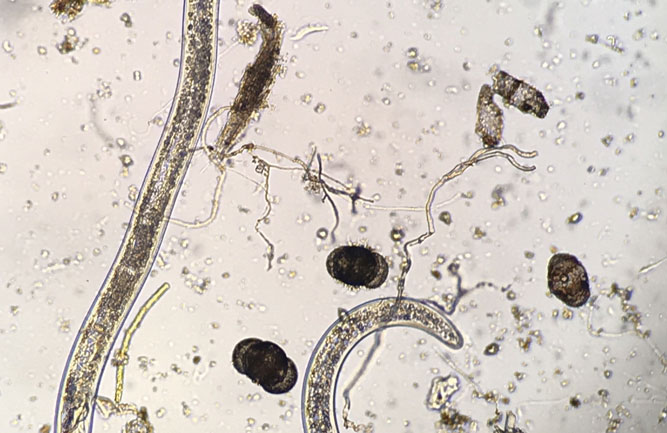Should you spice up your nematode program?
Sugar and spice and everything nice – is that what nematode control is made of?
Ever since his early days in graduate school when he used mustards to try to control nematodes Billy Crow, Ph.D., has looked at the use of materials like garlic, cloves, sesame oil and pepper oils for control of nematodes.
Now a Ph.D. specialist focused on management of plant-parasitic nematodes affecting turfgrasses at the University of Florida, Crow says he has tried at least 30 different materials. Most – but not all – he used without success.
“There is no silver bullet but you can suppress nematodes,” he says.
One exception is materials based on mustard bran derived from oriental mustards with glucosinolates. “That seems to knock down nematodes,” says Crow. There is one commercial product, MustGrow Invest, that delivers the mustard bran. It gives good turf response, perhaps in part because it is carried on a 5-1-1 fertilizer.
“It must be activated with water,” Crow says. “Its efficacy is mostly related to how good your irrigation system is at getting on a lot of water fast.” This is because the mustard produces a gas. It has to be well into the soil profile to work. Otherwise, the gas dissipates into the air and is lost.
Another natural product is bacillus firmus, sold by Bayer as Nortica. “It is a protectant more than a nematode killer,” Crow says. Because it is a biological organism, the key to success is getting it out at the right time. The window is narrow and depends on geography.
Crow has found it seems to have much better residual action – even getting better when used over a couple of years – than chemicals.
Don’t give up on chemicals, either. Crow noted that Abamectin (Avid from Syngenta) works well on greens although it must get through the thatch layer and down two-to-four inches into the soil. For best results, rates are very high at 57 ounces per acre, perhaps to make up for what is bound up in the higher layer of soil.
There is some more good news on the nematode front, too. Crow says he expects a new material – registered on food crops in 2014 – will be available for nematode control this year.











